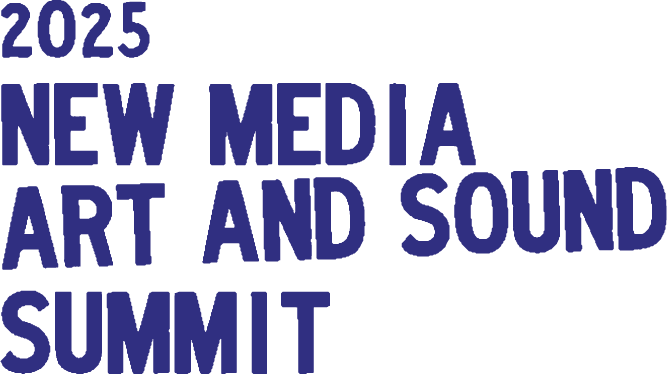“I’m new to sound art ! what is it?”
This list of terms and concepts is by no means exhaustive, simply an overview of some common forms and categories of music and sound art that you may encounter at a COTFG event:
Sound Art:
COTFG are considering all sound/music that is meaningfully arranged, presented and/or performed as Sound Art. This constitutes an umbrella of inclusivity and expansiveness in our definition that we find helpful for creating a stronger and more dynamic creative community.
Frequency/Pitch:
Sound is measured in waves, and how fast a wave is moving the air determines the pitch of a sound. The faster the frequency, the higher the pitch, the slower the frequency, the lower or deeper the pitch. Frequency is measured in Hertz (Hz)
Amplitude (or Loudness):
How loud or soft a sound is. Amplitude is measured in decibels (dB), the higher the dB, the louder the sound is.
Timbre:
Often described as the “color” of a sound. If a piano and a guitar play the same note, even though the note is the same, the way it sounds is different. The piano may sound like a very clean tone, but a guitar might have an effect that makes it sound more harsh or distorted. This difference in the way a note sounds is what is known as timber (pronounced TAM-ber), and can help differentiate between the source of a sound.
———————— FORMS ————————
For the sake of taxonomy (categorization) of established forms within the world of Sound Art, we have outlined some commonly understood forms below:
Avant-garde music: post WWII concept that deconstructs established musical structures and forms (i.e. John Cage, Phillip Glass, Frank Zappa); “a critique of existing musical aesthetics and a deliberate challenge to conventional ways of creating and experiencing music” ; designed to challenge audiences to explore new ways of listening and engaging with sound
Experimental music:
An umbrella term rooted in various genres (including electronic, classical, and rock, etc.) that push boundaries within structure, melody, rhythm, and timbre to discover new auditory landscapes.
Ambient music:
Like the name suggests, this is music that is meant to recede into its surroundings and color a space. This form was pioneered by Brian Eno in the late 1970s, and he describes it in this way; “Ambient Music is intended to induce calm and a space to think”, continuing “it must be as ignorable as it is interesting”. Ambient music often lacks drums and percussion in a conventional propulsive way, and is more concerned with atmosphere than traditional song structure.
Electroacoustic music:
This style of music utilizes both acoustic instruments (like guitar, drums, strings, orchestral instruments etc.) and electronic instruments (computers, effects processors, other electronic manipulations etc.) together to create compositions. The form this can take is vast, but the commonalities are the use of acoustic and electric methods together.
Electronic and Computer music:
This music is made entirely or in-part by a computer, either by human input, or generated by the computer itself.
Noise:
This is a genre that uses noise in an expressive way to create a composition. Includes dissonant sounds, non-musical sounds, interplay of silence and sound, and extreme volumes. The genre often avoids conventional structure and use of melody, and there’s a vast range of sound sources that can be utilized in creating noise music. From conventional and unconventional instruments, to use of non-instrument
Musique concrète:
This is a method of composition that uses recorded sounds as the raw material that are then manipulated into a work. These recorded sounds can be of anything, from conventional musical instruments, to sounds from nature, to human speech. Due to this fact, musique concrète can take many forms and styles. Musique concrète was pioneered as a new form of composition using magnetic tape to create a new piece of sound art from existing sounds (a precursor to sampling in music, which uses the similar principle of making something new out of something that already exists).
Field Recordings
Important note: in modern music composing, there is much overlap and a very free use of electronic, acoustic, unconventional and otherwise unique instrumentations and methods, so these are general parameters, with the caveat that there is a spectrum.
———————— CONCEPTS ————————
Active Listening vs. Passive Listening:
Active listening is being engaged in listening to the sound/music with substantial focus given to what is being presented to you, the intention being to give attention to the work that is being presented to you.
Passive listening is when you might be hearing something, but it is not your main focus and details may go unnoticed, like music in the background while you do other activities.
Much experimental music is more concerned with active listening than passive, as oftentimes the intention of experimental music is to present sound in a way that is unexpected or unfamiliar. This can at times demand the listener to be active in their listening. Conversely, much popular music has recognizable patterns and structures that are easily understood by the brain, and consequently easy to passively listen to.
Deep Listening
A concept developed by Pauline Oliveros in the early 70s. Deep Listening, as developed by Pauline Oliveros, explores the difference between the involuntary nature of hearing and the conscious nature of listening. The practice includes bodywork, sonic meditations, and interactive performance, as well as listening to the sounds of daily life, nature, one’s own thoughts, imagination, and dreams. It cultivates a heightened awareness of the sonic environment, both external and internal, and promotes experimentation, improvisation, collaboration, playfulness, and other creative skills vital to personal and community growth.
Somatic Listening
a technique that uses embodied awareness to connect with and process emotions and sensations within the body, often involving breath and body awareness to understand and respond to the physical manifestations of emotion
